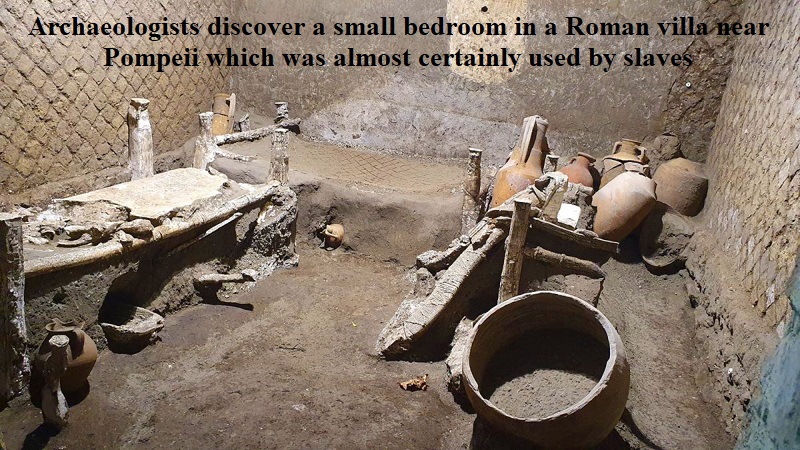
Archaeologists have uncovered a small sleeping chamber within a Roman villa near Pompeii, a discovery that likely belonged to slaves during ancient times, according to an announcement by the Italian culture ministry on Sunday (August 20). This room contained a collection of objects that provide insights into the marginalized existence of slaves in the ancient world.
The compact chamber, situated at the Civita Giuliana villa about 600 meters north of Pompeii’s walls, contained two beds, with only one possessing a mattress, alongside two small cabinets and an array of urns and ceramic vessels. The Italian culture ministry reported that the containers held the remains of two mice and a rat.
The ministry stated, “Once again, these details highlight the precarious conditions and poor sanitation in which the lower echelons of society lived during that era.”
Additionally, archaeologists uncovered remnants of furniture and fabric that had decayed over time, covered by layers of rock fragments and ash, likely from the volcanic eruption of Mount Vesuvius that led to Pompeii’s demise nearly two millennia ago. The decomposed materials left voids in the debris, which have been filled with plaster, revealing the original shapes and contours of the long-lost items, including the outline of a crumpled blanket on the bed netting.
Interestingly, the archaeologists noted the absence of grates, locks, or chains that might have restrained the room’s occupants. Director of the Archaeological Park of Pompeii, Gabriel Zuchtriegel, pointed out that this suggests “control was primarily exerted through the internal organization of servitude, rather than physical barriers and restraints.”
This isn’t the first excavation at the Civita Giuliana villa; previous ones took place in 1907-08 and again in 2017. The latter was conducted in response to illegal diggers looting the site. The villa has experienced renewed archaeological activity in recent times, thanks in large part to a $115.58 million European Union-funded project, as reported by Reuters.
Italian Culture Minister Gennaro Sangiuliano highlighted the significance of the insights gained from understanding the material conditions and social dynamics of that era. He stressed that these discoveries open up new avenues for historical and archaeological research. Sangiuliano emphasized that ongoing efforts in conservation and research would persist.

Post Your Comments